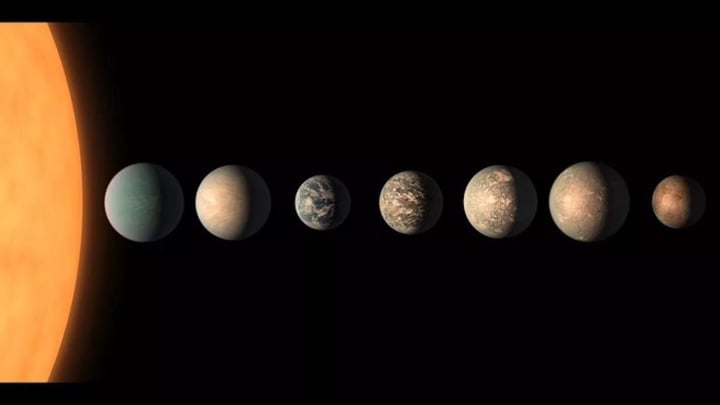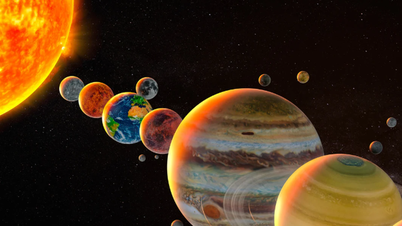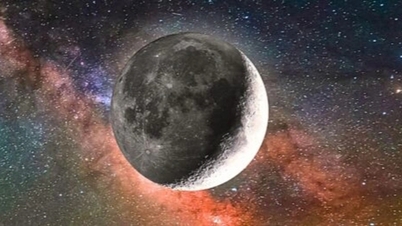The seven TRAPPIST-1 planets have long been at the center of a lingering debate, with scientists concerned that certain factors from the parent star and within the planets themselves could hinder their habitability.
Research recently published in the prestigious scientific journal Nature, led by astronomer Franck Selsis from the University of Bordeaux (France), has brought great news.

Seven "promised lands" for life around the star TRAPPIST-1. (Photo: NASA)
TRAPPIST-1 is a red dwarf star, much smaller and cooler than our Sun, located just 40 light-years away. Its seven planets—of varying sizes and shapes—all share some Earth-like characteristics that could make them suitable for supporting life.
What most interests scientists is that all seven planets are likely to harbor liquid water on their surfaces or interiors.
However, there are obstacles. The strangeness of some of these "ocean planets" has some scientists "worried", worried that having too much water compared to Earth will harm life.
The biggest concern remains the parent star: a cool but very radiant red dwarf, with powerful stellar winds that could cause water in its atmosphere to evaporate into space and turn it into a Venus clone instead of an Earth.
But Dr. Selsis said red dwarfs like TRAPPIST-1 would decrease in brightness over time.
The model he and his colleagues developed indicates that the young TRAPPIST-1 did indeed initially create "hellish" conditions for its seven planets, but as a red dwarf, it would not be hot enough to melt the crusts and mantles of these magma planets.
This means that quite a bit of water is still trapped in the rocks. That is, the fact that most of these planets are more water-rich than Earth is an unintended advantage.
In the years after the parent star cooled, liquid water oceans could have formed, which could now harbor abundant life.
According to Space, this discovery not only increases confidence in the 7 "promised lands" that have been of interest to astronomers in recent times, but also increases the great opportunity for humans to prove that they are not alone in the Milky Way.
Because red dwarf stars like TRAPPIST-1 are the most common type of star in the Milky Way, the galaxy that contains our Earth.
(Source: Lao Dong Newspaper)
Useful
Emotion
Creative
Unique
Wrath
Source





![[Photo] Hanoi morning of October 1: Prolonged flooding, people wade to work](https://vphoto.vietnam.vn/thumb/1200x675/vietnam/resource/IMAGE/2025/10/1/189be28938e3493fa26b2938efa2059e)
![[Photo] Keep your warehouse safe in all situations](https://vphoto.vietnam.vn/thumb/1200x675/vietnam/resource/IMAGE/2025/10/1/3eb4eceafe68497989865e7faa4e4d0e)
![[Photo] President of the Cuban National Assembly visits President Ho Chi Minh's Mausoleum](https://vphoto.vietnam.vn/thumb/1200x675/vietnam/resource/IMAGE/2025/10/1/39f1142310fc4dae9e3de4fcc9ac2ed0)






















































































Comment (0)